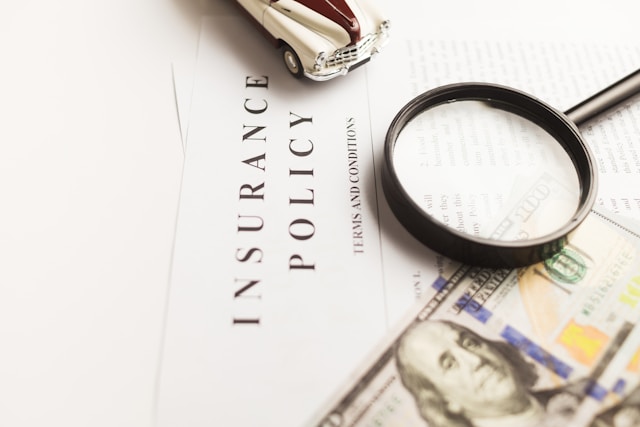Having a bike makes life more convenient, but it also comes with its own risks, such as accidents, theft, and damage. This is why bike insurance is not only a legal requirement in India but also a crucial form of financial protection. However, when filing a claim, most riders often become confused and lose time. The proper way to raise a claim can save time, avoid rejection, and make the settlement process easier.
What is a Bike Insurance Claim?
A bike insurance claim is a formal request made to your insurance provider to cover financial losses arising from damage, theft or third-party liabilities involving your bike. By filing a claim, you activate the benefits of your policy to recover repair costs, compensate for stolen bikes or handle legal liabilities. Platforms like ACKO.com simplify the claim process by offering a digital-first, paperless experience, making it easier for bike owners to get settlements without unnecessary hassle.
Types of Bike Insurance Claims
Bike insurance claims are broadly categorised into two types. Both of these come with their own process and benefits.
1. Cashless Claim
A cashless claim enables you to repair your bike in an insurer approved network garage without paying for any initial expenses. The insurance company pays the bills directly to the garage, except for deductibles or non-covered costs. This is a convenient option because there is no need to gather money to make repairs.
2. Reimbursement Claim
In a reimbursement claim, the policyholder will pay for the repairs upfront and then submit bills and documentation to the insurer for a refund. Although this process is a bit longer, it gives the option of flexibility to fix the bike in any garage of your preference.
When Should You File a Bike Insurance Claim?
Filing a claim should not be done for every minor scratch. Knowing when to file ensures that your no-claim bonus (NCB) is not unnecessarily affected by minor expenses. It is advisable in cases such as:
- Accident Damage: Major dents, broken parts or severe damage caused by collisions.
- Theft: If the bike is stolen despite proper precautions.
- Third-party Liability: If your bike damages someone else’s property or injures a third party.
- Natural Disasters or Fire: If floods, earthquakes, cyclones, or accidental fires damage your bike.
Step-by-Step Process to File a Bike Insurance Claim
The process of filing a bike insurance claim varies depending on the nature of the incident, whether it is own damage, third-party liability, or theft. Here’s a step-by-step guide for each type.
1. Steps for Own Damage Claim
- Inform your insurer immediately about the accident.
- Document the damage with photos, videos, and witness details if possible.
- Submit the claim form along with the required documents.
- A surveyor appointed by the insurer inspects the bike.
- Once approved, take the bike to a network garage for cashless repair, or to any garage if you prefer reimbursement.
- The claim is settled after deductibles, if applicable.
2. Steps for Third-Party Claim
- Report the incident to your insurance company immediately.
- File an FIR at the nearest police station, especially if property damage or injury is involved.
- Provide details of the third party, including contact information and vehicle details.
- Your insurer handles the case, which may go to a Motor Accident Claims Tribunal (MACT).
- Compensation is paid to the third party as per the tribunal’s order.
3. Steps for Bike Theft Claim
- File an FIR at the local police station immediately.
- Inform your insurer and provide a copy of the FIR.
- Submit the required documents including your policy, RC and claim form.
- If the police issue a non-traceable certificate, the insurer processes the settlement.
- The claim amount, equivalent to the insured declared value (IDV), is then paid.
Digital-first insurers like ACKO Bike Insurance streamline these processes by offering app-based claim filing and quick approvals.
Documents Required for Bike Insurance Claim
While the exact list may vary depending on the type of claim, in general, you will need:
- A copy of the insurance policy
- Duly filled claim form
- Registration Certificate (RC) of the bike
- The driver’s license of the rider at the time of incident
- FIR (for accidents, theft, or third-party cases)
- Photographs or video proof of damage
- Repair bills and receipts (for reimbursement claims)
Common Reasons for Bike Insurance Claim Rejection
Insurance companies may reject claims if certain conditions are not met. Common reasons include:
- Riding without a valid driver’s license
- Drunk driving or reckless riding at the time of accident
- Using the bike for illegal activities or commercial purposes not covered by the policy
- Policy expiration or lapse at the time of the incident
- Misrepresentation of facts or false claims
- Delayed notification to the insurer after the incident
Tips for a Hassle-Free Bike Insurance Claim Settlement
Making a successful claim is often about being prepared and responsible. Here are some tips:
- Keep Your Documents Updated: Ensure your policy, license and RC are valid and renewed on time.
- Report Incidents Immediately: Prompt notification helps avoid complications.
- Use Network Garages: Opting for insurer-approved garages simplifies the cashless claim process.
- Ride Responsibly: Avoid risky driving habits that could lead to rejection.
- Understand Policy Inclusions and Exclusions: Knowing what is covered helps avoid filing ineligible claims.
- Go Digital: Insurers like ACKO offer online claim filing, reducing paperwork and speeding up settlements.
Conclusion
The process of making a bike insurance claim does not need to be stressful. Bike owners can easily obtain quick settlements without much ado by understanding the types of claims, taking the necessary steps, having the required documents ready, and avoiding common pitfalls. Whether it’s an accident, theft, or third-party damage, insurance provides financial protection when it is needed the most. The experience can be even easier by selecting a reliable insurer whose digital claims process is seamless, allowing the riders to get back on the road with confidence.








